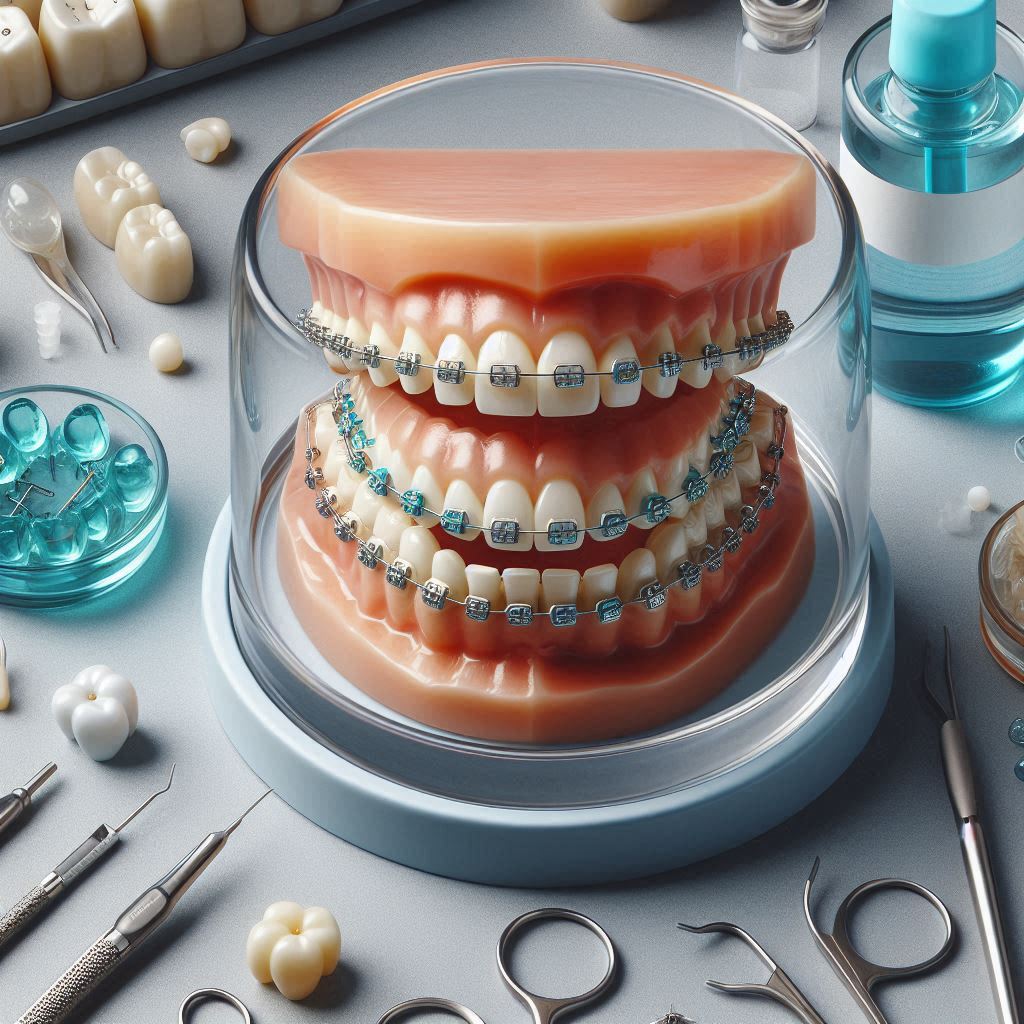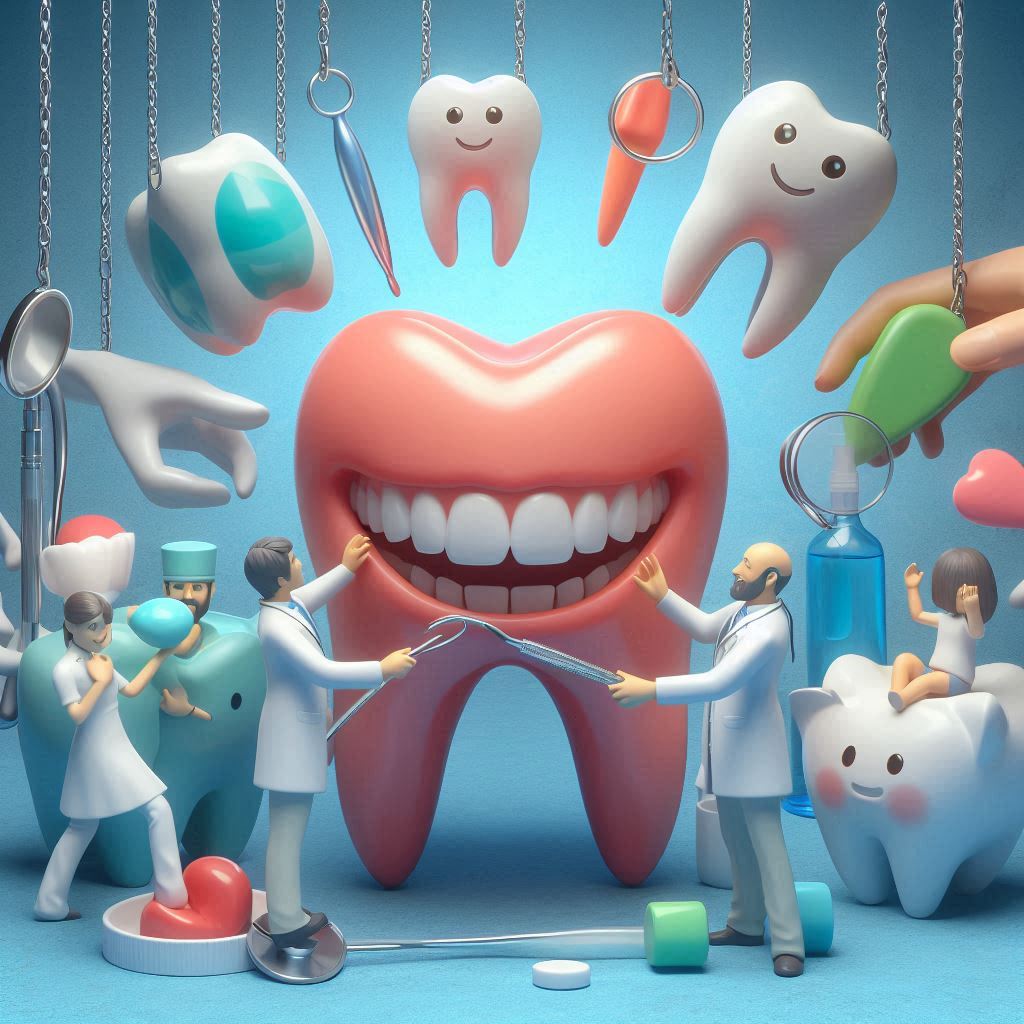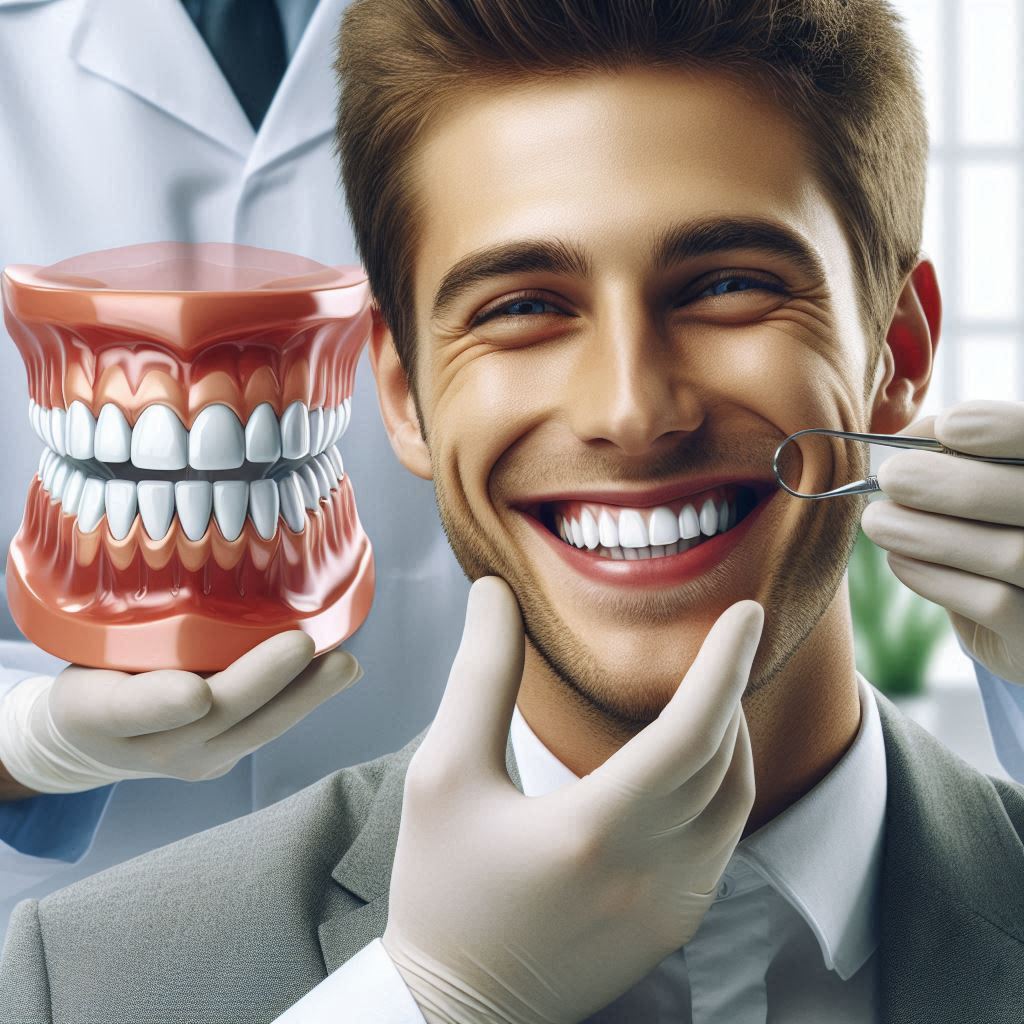Orthodontic treatment has evolved significantly over the past few decades. One of the most important aspects of orthodontics is the use of braces, a proven solution for teeth alignment, bite correction, and aesthetic enhancement. While the ultimate goal of all types of braces is to straighten teeth, there are distinct types to consider, each with unique features, benefits, and considerations. This comprehensive guide will delve into the three primary types of braces: metal, ceramic, and lingual, offering an in-depth analysis of each to help you make an informed decision about which option best suits your needs.
Metal Braces: The Traditional Choice
What Are Metal Braces?
Metal braces, often referred to as traditional braces, are the most commonly used form of orthodontic treatment. They consist of metal brackets that are attached to the teeth, connected by a wire and small elastic bands. These components work together to gradually move the teeth into their correct positions.
Components of Metal Braces
- Brackets: The metal squares that are bonded to each tooth. These brackets hold the archwire in place.
- Archwire: The thin metal wire that runs through the brackets. The archwire is responsible for guiding the teeth into alignment by applying consistent pressure.
- Elastic Bands: Small rubber bands that are used to hold the archwire in place and can also help with bite alignment.
- Ligatures: These are small, elastic bands or metal ties that hold the archwire to the brackets.
How Metal Braces Work
Metal braces work by applying gentle, continuous pressure to the teeth, gradually guiding them into alignment. The archwire placed in the brackets is tightened periodically during visits to the orthodontist. This tightening procedure ensures that the pressure exerted on the teeth continues to shift them slowly and steadily toward their ideal position. Over time, bone structure around the teeth adjusts, allowing the teeth to move into new positions.
The process takes place in incremental steps, and though results are often visible within a few months, it typically takes about 1 to 2 years to fully complete treatment with metal braces, depending on the severity of the misalignment.
Advantages of Metal Braces
- Proven Effectiveness: Metal braces are tried and tested and have been used for many years with great success.
- Cost-Effective: Generally, metal braces are the most affordable option when compared to ceramic or lingual braces.
- Durability: Metal braces are strong and durable, making them ideal for patients with more severe alignment issues.
- Customizable Colors: For patients who enjoy expressing their personality, metal braces come with the option to choose from a variety of rubber band colors.
- Highly Adjustable: Metal braces are versatile and can be adjusted frequently to accommodate significant changes in the alignment of the teeth. They are the best option for patients with complex orthodontic needs.
Disadvantages of Metal Braces
- Aesthetics: The most obvious disadvantage of metal braces is their visibility. Since they are made of metal, they can be quite noticeable, which may make some people feel self-conscious.
- Discomfort: Metal braces can sometimes cause irritation to the inside of the lips and cheeks. Additionally, the process of tightening the braces can cause temporary discomfort.
- Maintenance: Metal braces require regular visits to the orthodontist for adjustments, and patients must be careful about the types of food they consume to avoid damaging the brackets or wires.
- Food Restrictions: Metal braces are susceptible to damage from certain foods. Patients are advised to avoid sticky, hard, or crunchy foods, as they may break the braces or get stuck in the brackets and wires.
- Oral Hygiene: Braces can make it more challenging to keep the teeth clean. Food particles can easily get stuck in the brackets and wires, leading to a higher risk of cavities, plaque buildup, and gum disease if proper oral hygiene is not maintained.
- Frequent Visits to the Orthodontist: Metal braces require frequent adjustments by the orthodontist to ensure the treatment progresses correctly, which can result in a time commitment for patients.
Ceramic Braces: The Discreet Option
What Are Ceramic Braces?
Ceramic braces are similar to traditional metal braces but offer a more aesthetic alternative. Ceramic braces use clear or tooth-colored brackets, which are less noticeable than the shiny metal counterparts. These braces are made of a durable ceramic material, which blends more seamlessly with the color of the teeth.
Ceramic braces offer many of the same benefits as metal braces but with an emphasis on aesthetics. Ceramic braces are ideal for patients who want the benefits of braces without drawing attention to their treatment. These braces are often chosen by adults or teenagers who are concerned about the appearance of traditional metal braces.
Components of Ceramic Braces
- Ceramic Brackets: The main difference between ceramic and metal braces is the material used for the brackets. Ceramic brackets are made from a durable, tooth-colored material that blends in more seamlessly with the natural color of the teeth.
- Archwire: Like metal braces, ceramic braces also use an archwire to align the teeth. In some cases, the archwire can be clear or coated with a material that matches the color of the ceramic brackets.
- Elastic Bands: Ceramic braces also use elastic bands to hold the archwire in place, and these bands can be color-coordinated with the brackets.
How Ceramic Braces Work
Ceramic braces work in the same way as traditional metal braces. The archwire applies consistent pressure on the teeth, gradually moving them into alignment. Like metal braces, ceramic braces require regular visits to the orthodontist to have the archwire tightened. This gradual movement of the teeth continues over the course of the treatment, which typically lasts 18 to 24 months, depending on the severity of the case.
One of the key differences between ceramic and metal braces is the materials used for the brackets. Ceramic brackets are designed to blend with the natural color of the teeth, making them far less conspicuous than metal brackets. However, they still provide the same level of effectiveness in correcting dental issues.
Advantages of Ceramic Braces
- Aesthetic Appeal: The primary advantage of ceramic braces is their aesthetic nature. Since the brackets are clear or tooth-colored, they are much less noticeable than traditional metal braces, making them a popular choice for individuals who are concerned about the appearance of braces.
- Effective Treatment: Like metal braces, ceramic braces are highly effective in treating a variety of dental issues, from minor misalignments to more complex cases of overcrowding or bite issues.
- Comfortable: Ceramic braces are typically more comfortable than metal braces since they are smoother and less likely to cause irritation to the inside of the mouth.
- Customization: Patients can choose from a variety of rubber bands to further personalize the appearance of their braces. This allows for some fun customization and a more individualized treatment experience.
Disadvantages of Ceramic Braces
- Cost: Ceramic braces are generally more expensive than metal braces due to the materials used and the time it takes to custom-make the brackets. This can be a limiting factor for individuals on a tight budget.
- Fragility: Ceramic braces are more fragile than metal braces and can break or chip more easily. They may not be the best choice for individuals with active lifestyles or children who may be prone to accidents.
- Staining: The ceramic brackets themselves are stain-resistant, but the elastic bands used to hold the archwire in place may discolor over time, especially if the patient consumes foods and drinks like coffee, tea, or berries. This may require more frequent visits to change the bands.
- Maintenance: While ceramic braces require the same level of maintenance as metal braces, they can be more difficult to keep clean, particularly due to staining and the potential buildup of plaque.
Lingual Braces: The Hidden Option
What Are Lingual Braces?
Lingual braces are similar to traditional metal braces but are placed on the inside of the teeth, making them completely invisible from the outside. They are often referred to as “hidden braces” because they are discreet and not visible when smiling or talking. Lingual braces are a great choice for patients who want the benefits of braces without the noticeable appearance.
Components of Lingual Braces
- Brackets: Lingual braces use custom-made brackets that are designed to fit the shape of the inside of the teeth. These brackets are bonded to the back of the teeth, making them invisible when you smile.
- Archwire: The archwire used in lingual braces is similar to that of traditional braces, but it is designed to fit on the inside of the teeth. The wire is adjusted periodically to gradually move the teeth into place.
- Elastic Bands: Lingual braces may also use small elastic bands to help with the movement of the teeth.
How Lingual Braces Work
Lingual braces work in much the same way as traditional braces, but the key difference lies in their placement. Instead of being attached to the front of the teeth, as with metal or ceramic braces, the brackets are fixed to the inside of the teeth. This makes them completely invisible to others, even when smiling or speaking.
The process of moving the teeth is the same as with other braces—gentle pressure is applied over time to shift the teeth into alignment. However, because of the location of the brackets, lingual braces tend to take slightly longer to adjust, as they may require more precise adjustments.
Advantages of Lingual Braces
- Invisible: The most significant advantage of lingual braces is their invisibility. Because they are placed on the inside of the teeth, no one will be able to see them, making them an ideal choice for those who are concerned about the aesthetics of traditional braces.
- Effective for Complex Cases: Lingual braces are highly effective in treating complex orthodontic issues, including severe malocclusions and bite problems.
- No Impact on Appearance: Lingual braces allow patients to maintain their appearance during treatment, which can be particularly appealing for adults in professional settings.
- Ideal for Adults: Lingual braces are especially popular among adults and professionals who need to maintain their appearance while undergoing treatment. They provide the benefits of traditional braces without the noticeable aesthetic impact.
Disadvantages of Lingual Braces
- Cost: Lingual braces tend to be the most expensive option, as they are custom-made and require specialized expertise to fit and adjust.
- Comfort: Since the brackets are placed on the inside of the teeth, they can be more uncomfortable at first and may cause irritation to the tongue and the roof of the mouth.
- Speech Impediment: Some patients experience a temporary speech impediment when they first get lingual braces, as the brackets can take up space on the tongue’s natural position.
- Difficulty in Cleaning: Cleaning lingual braces can be challenging, and patients need to pay extra attention to their oral hygiene to avoid plaque buildup and tooth decay.
Choosing the Right Type of Braces
When choosing between metal, ceramic, and lingual braces, there are several factors to consider:
- Aesthetic Preferences: If you’re concerned about the appearance of braces, ceramic or lingual braces may be a better choice for you, as they are less noticeable.
- Budget: Metal braces are generally the most affordable option, while ceramic and lingual braces tend to be more expensive.
- Complexity of the Case: Metal braces are ideal for severe orthodontic issues, while ceramic braces are better for mild to moderate cases. Lingual braces are suitable for complex cases but may be harder to adjust and maintain.
- Lifestyle: Consider your lifestyle and how active you are. Metal and ceramic braces may be more suitable for people who are involved in sports, as lingual braces may cause more discomfort and require extra care.
- Comfort: Ceramic and lingual braces may be more comfortable initially, but metal braces are often easier to adjust and maintain over time.
- Treatment Duration and Complexity: If you have a complex orthodontic issue, metal or lingual braces might be more suitable, as they are effective for severe cases.
- Maintenance: Consider how much effort you are willing to put into oral hygiene and maintenance, as ceramic and lingual braces may require extra care.
Conclusion
Choosing the right type of braces depends on various factors, including aesthetic preferences, budget, and the severity of the orthodontic issue. Metal braces remain the most common and cost-effective option, while ceramic braces provide a more discreet solution. Lingual braces, though more expensive and challenging to maintain, offer the ultimate invisibility. Each option has its advantages and disadvantages, and the best choice will depend on individual needs and goals. Consulting with an orthodontist is the first step to determining which type of braces is best for you.
SOURCES
American Association of Orthodontists (AAO). (2019). Braces and orthodontic appliances: An overview. American Journal of Orthodontics and Dentofacial Orthopedics, 155(4), 465-471.
Cohen, M. E., & Larson, R. L. (2020). Orthodontics: Current trends and future innovations. Journal of Clinical Orthodontics, 54(2), 34-39.
Gianelly, A. A., & Smith, L. D. (2018). Orthodontic treatment planning: Techniques and considerations. Dental Clinics of North America, 62(1), 105-118.
Shroff, S. R., & Robinson, M. E. (2017). Metal, ceramic, and lingual braces: A comprehensive review of orthodontic appliance options. International Journal of Orthodontics, 88(2), 90-99.
Johnson, K. R., & Richards, D. P. (2015). Ceramic and metal braces: A comparative study. American Journal of Orthodontics and Dentofacial Orthopedics, 148(3), 377-384.
Bishop, G. P., & Simons, E. A. (2021). The evolution of orthodontic appliances: A historical perspective on braces. Journal of Dental History and Technology, 42(2), 45-52.
Baker, J. A., & Wu, K. H. (2016). The effectiveness and aesthetic appeal of lingual braces. Journal of Clinical Dentistry, 30(4), 143-148.
Murphy, A. D., & Ford, S. K. (2022). Cost considerations in orthodontic care: A study of traditional versus modern braces. Journal of Orthodontic Research, 19(3), 213-220.
Simmons, T. R., & Lee, P. L. (2019). Innovations in orthodontic technology: New materials and design principles. Orthodontic Review, 12(4), 60-64.
Williams, C. J., & Miller, G. T. (2020). Treatment duration with different types of braces: A comparative analysis. Journal of Dental Orthopedics, 35(1), 11-18.
HISTORY
Current Version
February 13, 2025
Written By:
SUMMIYAH MAHMOOD




